
- Share via
ZHENGZHOU, China — The mayor of this flooded city arrived at the tunnel at midnight. Muddy water poured across the road as workers drained the six-lane-wide underpass. Dozens of onlookers gathered, hoping to glimpse what lay beneath the water. Police shooed them away.
Chen Yuanqiu lived nearby. He had witnessed the flood and knew that during rush hour the tunnel could be clogged with hundreds of cars. The government said that only six people had drowned. But rumors in chat groups suggested that bodies were being taken out of the tunnel in secret.
Chen, who had been watching videos of the scene all day, grew skeptical of official claims. He had a troubling question: “How many people were trapped inside?”
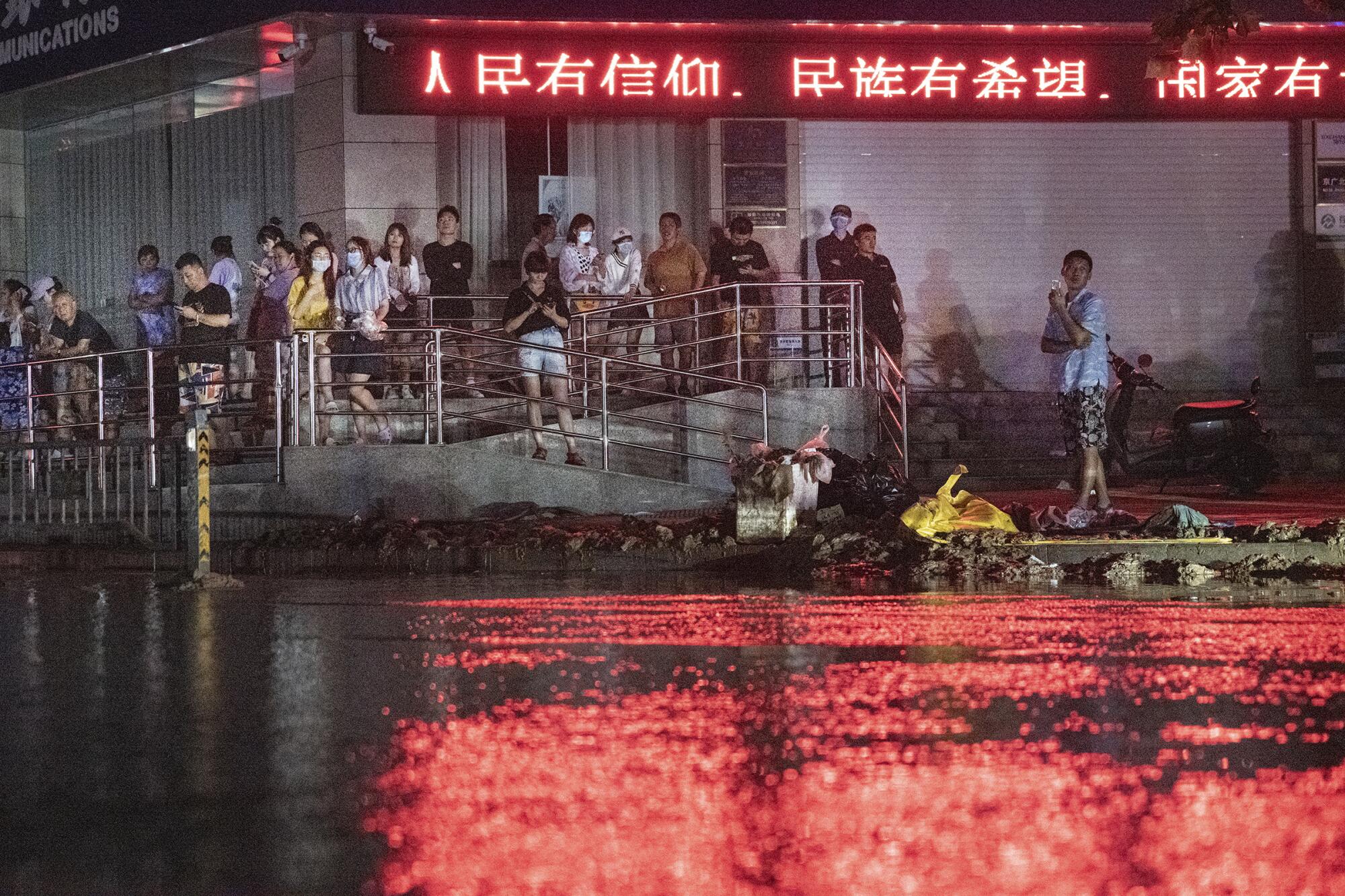
The events at the tunnel underscored tensions around a storm that brought catastrophic floods across central China’s Henan province last week. Rather than sparking a public conversation about climate change and whether China’s cities are prepared for extreme weather, the ruling Communist Party has restricted information and encouraged nationalistic celebration amid an ongoing crisis. The result is a sense of unease as flood survivors are pressured to praise government relief efforts, and those who call for accountability are attacked.
The floods have affected more than 13.3 million people and displaced at least 2.4 million, according to official figures, with 71 deaths and five missing so far. They include six bodies found among 247 cars in the tunnel and 14 who drowned in the Zhengzhou subway, authorities say. Lists of missing people compiled by grass-roots volunteers include dozens more.

Large swaths of Henan north of Zhengzhou are underwater, with more rain forecast in coming days. Many of the flooded villages and smaller towns west of Zhengzhou have no running water, electricity or cellphone reception. A massive rescue effort is underway, including both Chinese military and grass-roots volunteers who have rushed from across the country to help.
At the same time, government propaganda is controlling the narrative. Chinese media have been instructed to report on post-disaster recovery, avoid an “exaggeratedly sorrowful tone” and adhere to official statistics on casualties and damage, according to a leaked censorship directive published in the China Digital Times.
Grief has become a target of control. On Monday, Zhengzhou residents laid dozens of bouquets of flowers at the entrance to the subway line where the 14 had drowned. But authorities soon erected a yellow barrier around the flowers, blocking them from view. Journalists and passersby shared photos of the blocked memorial online, sparking thousands of angry comments.
“They are even afraid of flowers,” one wrote.
Another circle of flowers and candles soon surrounded the yellow barrier. At night, videos shared online showed Zhengzhou residents pulling the barrier down as people applauded.
Another leaked directive instructed government workers to go door-to-door around the tunnel and warn shopkeepers: “Heighten awareness, do not accept foreign media interviews, do not give them any possibilities to twist the truth. If any relevant situation happens, report to the district workers or call the police.”
The Times was unable to verify the directive, but foreign reporters from at least five different media outlets were harassed while reporting near the tunnel in the last few days. One salesperson who spoke with The Times about economic losses was pulled away by two women and later threatened by her supervisor, who told her she would be questioned by police.
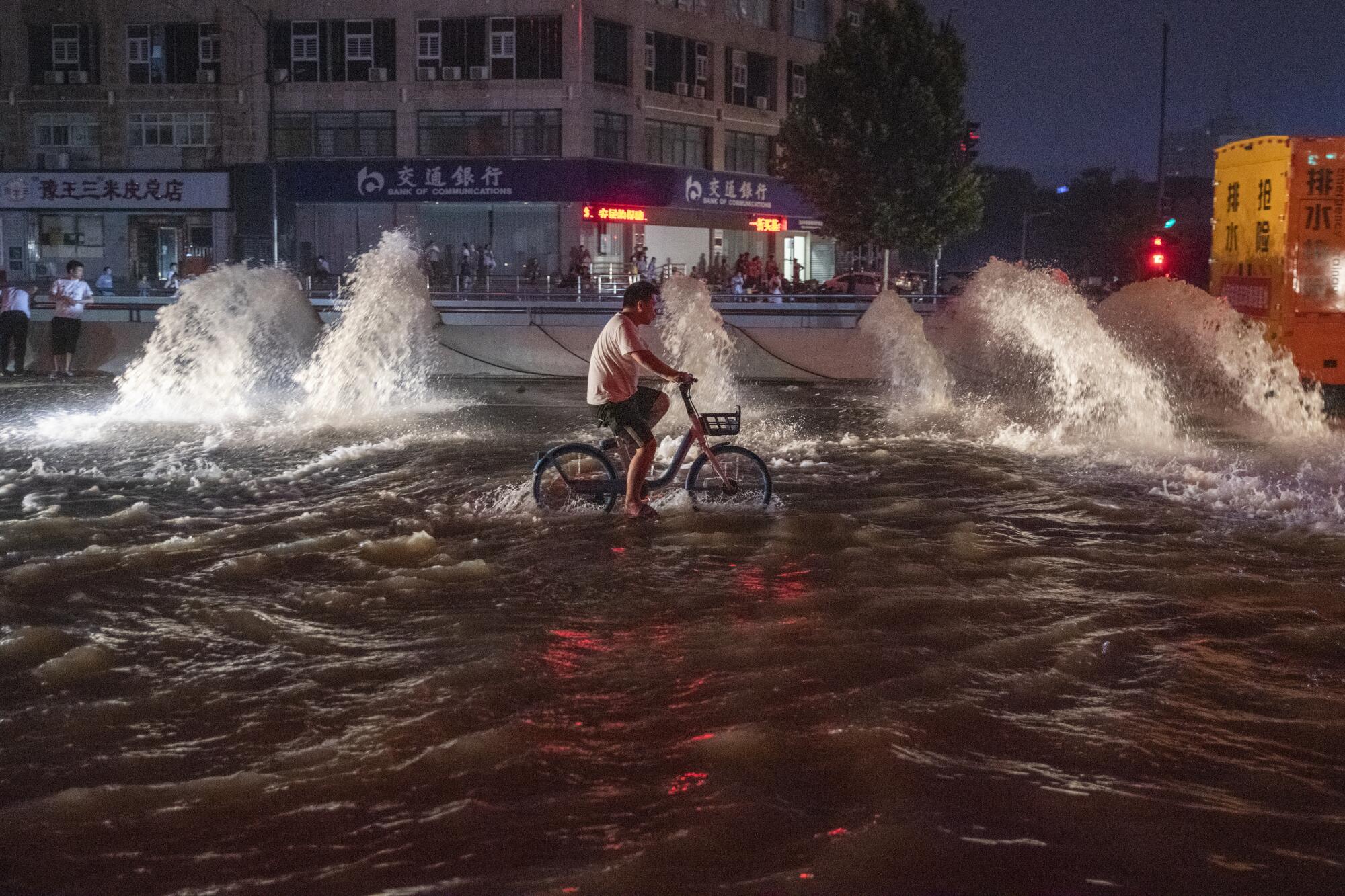
While reporting near a Zhengzhou street, where several parts of the road had caved in on Friday, a Times reporter and a German colleague were surrounded by an angry crowd. They accused the reporters of “smearing China” and “spreading rumors.” They demanded the journalists portray “a good view of China,” but refused to be interviewed themselves.
One man pulled out a cellphone with a screenshot and shouted, “It’s him!” They had mistaken the German colleague for a BBC correspondent, who’d also reported from Zhengzhou and raised questions about the city’s subway and drainage system. For that, he was attacked on Chinese social media as a “rumormonger,” with calls to hunt him down. At least one of the manhunt calls came from the Henan Communist Youth League’s official account.
On Weibo, China’s version of Twitter, two people who claimed to be survivors of the Jingguang North Road Tunnel have also been attacked online after writing about their experience and asking why the tunnel entrance was not blocked when officials knew heavy rains were coming. The Times was not able to reach them for comment.
But others, especially flood victims in the worst-affected areas, spoke openly with The Times about their distress at the destruction.
In Mihe, a town west of Zhengzhou perched at the intersection of two rivers, dozens of cars tangled with trees and electric wires were strewn in every direction. A red truck lay capsized under a bridge, the river snaking past it still heavy with mud. Its rushing roar mingled with the sound of bulldozers scooping up debris.
“So many of us in Mihe have lost everything,” said a woman sitting on a log sticking out of a flooded supermarket. Her family sold lamps and lighting fixtures next door. Their ground-floor storefront had been destroyed, she said. Their warehouse supply had also been flooded and their delivery truck washed away.
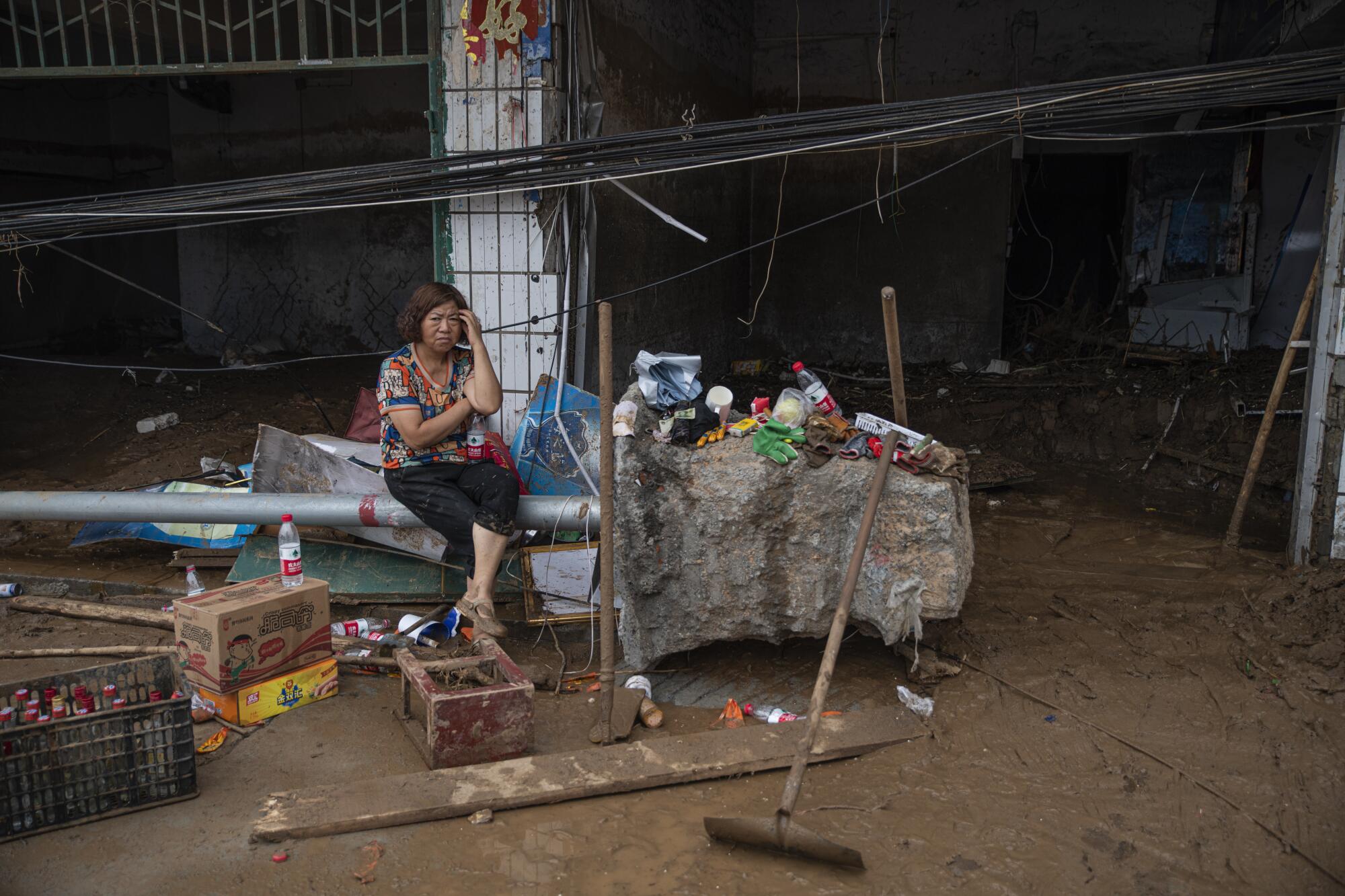
“We are empty-handed,” said the woman, who asked to not be named because she feared being called a “rumormonger.” Many people were unable to reach loved ones who were swept away in the flood, she said, and were still searching for them.
Qiao Shi, 58, stood next to the battered skeleton of a pink car on Xinxing Road, a commercial street lined with now-hollow storefronts. Everyone in Mihe had gone out to work as normal that day, he said, despite the heavy rains. They had received no warning of potential flooding.
“That made it even worse for us,” he said. “The government should have told us that morning to evacuate. At least protect people. We can forget about property, but human safety and human lives — you should at least guarantee that.”
Many people had been swept away, said Qiao, who believed the official number of deaths was too low: “It’s definitely not just two or three. It’s more than 10, it’s tens of people.”
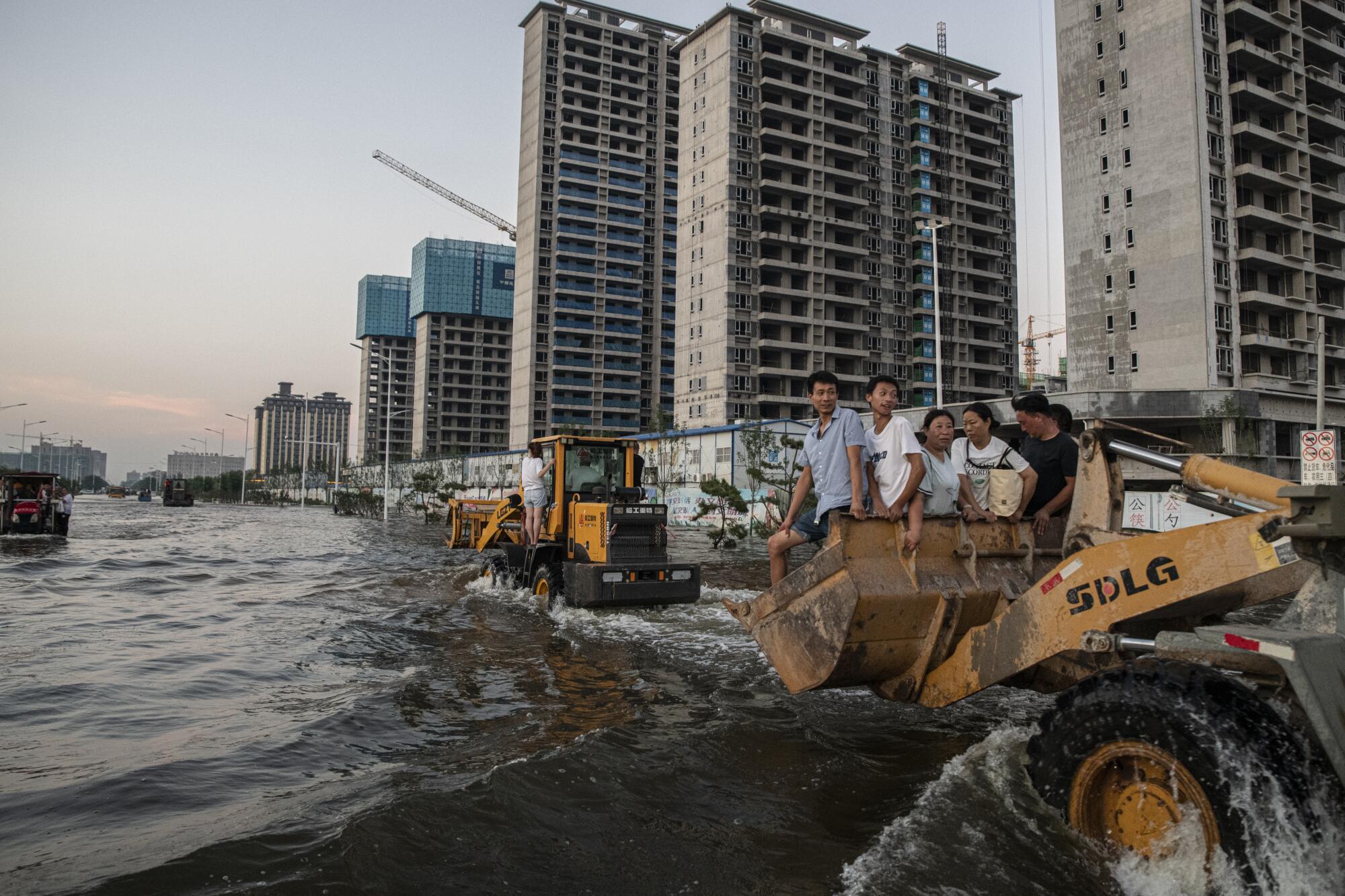
“The government is thinking of their image,” he added. “We common people have the common people’s pain.”
Others were more forgiving and didn’t blame the government. Official death and missing tolls are still being tallied. The extreme weather was beyond anything anyone could predict, many locals said, especially in these parts of Henan, usually a dry area that does not experience heavy rains. Even the weather chief of Gongyi, the city that includes Mihe, had been washed away in his car during Tuesday’s floods (and later rescued), according to Chinese reports.
“We’ve never seen such big water,” said Zhang Huanrong, 50, a woman who lived near the railroad tracks behind Mihe. Zhang, whose septuagenarian uncle is still missing, imitated the sound of the water: “It was like balabalabala, hundreds of cars rushing out with the water, with trees and washing machines and you don’t even know what.”
But Zhengzhou city and Henan province’s weather bureaus had issued 10 red alerts about extreme storms in the 18 hours leading to the flood. The alerts were public, and at least in Zhengzhou, each alert came with recommendations that the local government “take appropriate emergency measures” including halting all meetings, classes and businesses.
The Times called authorities in Zhengzhou and Gongyi to ask why emergency measures were not taken before the floods. They referred The Times to their local propaganda departments, which asked The Times to call the Henan provincial propaganda office. It in turn sent The Times to the local departments again. They then asked The Times to send questions by email and did not immediately respond.

The scenes unfolding in Henan are following a familiar formula in President Xi Jinping’s China: After disaster, authorities turn tragedy into triumph, while controlling victims’ narratives and quashing questions. A genuine outpouring of care for flood victims has been reshaped into support for the party, while anger at officials’ failures has been redirected toward “hostile foreign forces.”
It is a script deployed in China with remarkable success after propaganda last year obscured the government’s missteps during the COVID-19 outbreak and Wuhan lockdown. The pro-party message persists today in Weihui, a badly flooded smaller town north of Zhengzhou, where some rescue vans had red banners hung on their sides that read: “Follow the Party forever.”
This is all playing out as Chinese people continue to live their lives — and endure their hardships.
In the hills behind Mihe, dozens of tiny villages inhabited mostly by the elderly were caught in mudslides during the storms. On the road to one village, flat fields dropped off into freshly carved craters. Bushes hung upside down from their roots against eroded red hills.
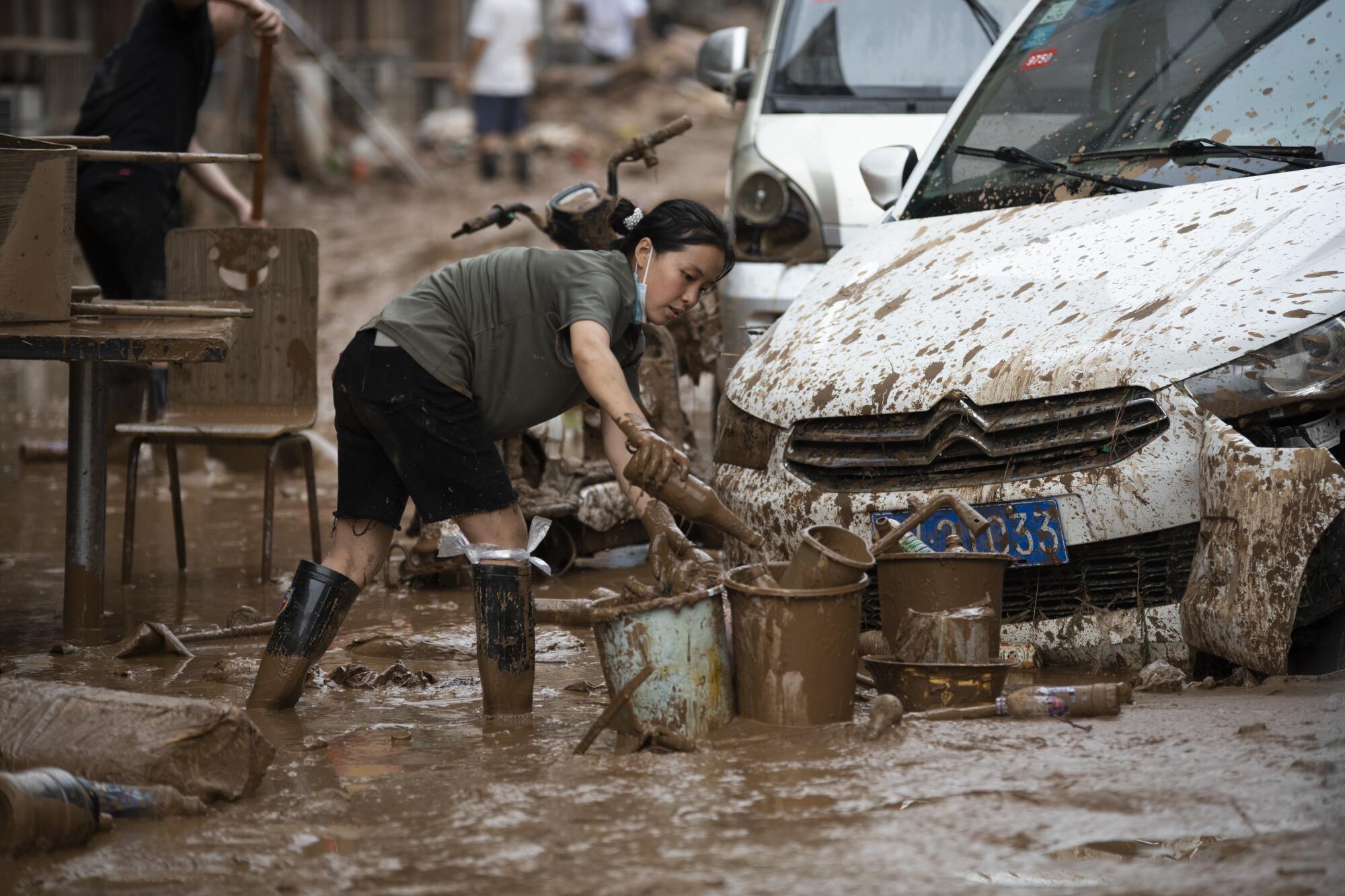
Zhang Renzhi, 71, wearing a loose blue shirt and rubber sandals, sat staring at the corn field outside his home. His 91-year-old father sat behind him, hunched and head bowed in a wooden chair. They had been trapped here during the storm, mud and water flowing straight on to their roof as the hills seemed to collapse around them.
“I was afraid,” said Zhang. “There was nowhere to run. Nowhere to escape.”
For two days, father and son lived on the water and food they had stored inside, without power, electricity or a phone signal. Rescue workers came to evacuate them on the third day, but Zhang, worried that his father was too frail to move, turned them away. He had already started shoveling mud from the living room, the front yard, the roof.
As night fell, they would stay in the dark, waiting for the next rain.
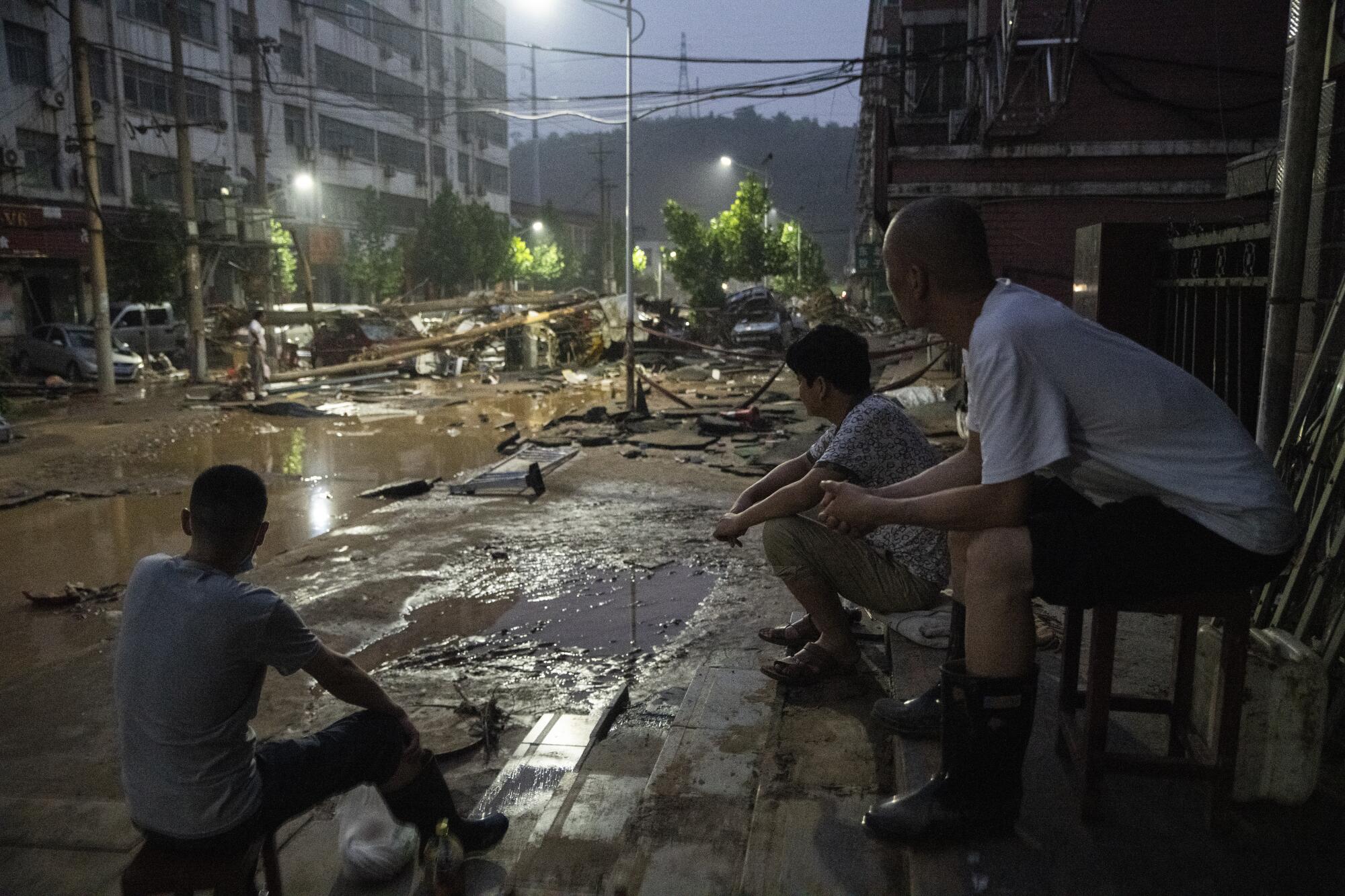
More to Read
Sign up for Essential California
The most important California stories and recommendations in your inbox every morning.
You may occasionally receive promotional content from the Los Angeles Times.











